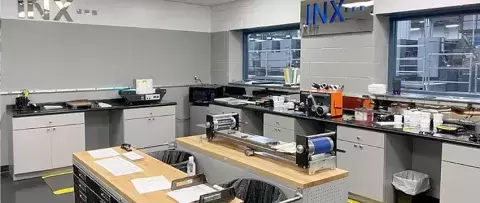Why G7 Calibrated Printing is So Important
Many print service providers are familiar with the term G7, but what does it actually mean? In short, G7 is a calibration process used to improve the printing consistency and accuracy between different printing devices. It’s an international standard created by Idealliance, an independent non-profit organization that focuses on driving industrywide standards for digital media and print production.
Why Is G7 Calibrated Printing Important?
G7 calibrated printing is important because it helps guarantee quality assurance across multiple printing devices. Without calibration, there could be significant discrepancies between press runs from different sources due to differences in color management practices. This can lead to problems such as inaccurate color reproduction or misaligned borders on images and text elements. By using the G7 standard for calibration, you can ensure that your prints remain consistent no matter which printer they come from.
How Does G7 Calibrated Printing Work?
G7 calibrated printing works by replacing density-based linearization process with greyscale calibration. This calibration process redefines grey from a*0, b*0 to start at whatever the white point of media is and then gradually corrects in inverse proportion to the amount of ink coverage. This is done to reflect a concept known as “chromatic adaptation”. The human response auto-corrects for variations in white point. It also introduces Neutral Print Density Curves vs TVI to control contrast or ‘tonality’. This is known as “G7 Grayscale”. Depending on the application, a second tier of compliance is added that sets L*A*B target values for CMYK and 2 color traps (C/Y C/M M/Y). The target L*A*B’s can be set for any color space and/or colorants.



G7 Compliance Levels
There are no standard values for G7 compliance. However, the most common color space utilized for printing in North America is GRACol. For that reason, most printers aim at colors defined by GRACol standards when achieving what is known as “G7 Targeted’ compliance. Targeted is the level of compliance targeted by most offset printers. The highest level of compliance is called “G7 Color Space”. This level of compliance is mostly used for proofing devices or inkjet printers. It usually requires the use of ICC profiles in addition to simple 1d curves. It uses a larger sample of colors within a specific color space and measures how accurately the space is reproduced by a given device.
| Gray Balance | Tonality | Shared Neutral Appearance | Overprints | Entire Colorspace | |
|---|---|---|---|---|---|
| Gray Close match in neutral grays but may exhibit differences in colors areas |
• | • | • | ||
| Targeted Close match in grays and solid colors but may have differences in some colors |
• | • | • | • | |
| Colorspace Close match across a G7-based color Space |
• | • | • | • | • |
What is the difference between G7 and ICC profiling?
G7 is a calibration method usually using 1-dimensional curves for each individual color to achieve greyscale. Depending on the device ICC profiles might be needed to achieve targeted or colorspace compliance. ICC is a look-up table that translates RGB or CMYK values into corresponding L*A*B values. Since GRACol and other color standards based on ISO12647 were based on data from offset lithography, targeted and in some cases colorspace compliance can be achieved with simple curves for offset. Since standard colorants are different for other processes like inkjet, flexo, and silkscreen an ICC profile can be used in conjunction with G7 calibration to achieve desired color standards.
How can Print Service Providers obtain G7 Qualification?
Print Service providers can work with a G7 professional or expert to go through the G7 process and submit G7 calibrated samples. INX International has G7-certified experts on staff that can help you achieve G7 qualification for any print process. We can also provide concise press room training giving press operators a beneficial overview of G7 methodology and benefits such as easier more intuitive process control.
CONTACT
Ensure printing consistency and accuracy. Request a G7 Qualification Consultation.
Contact a G7 Specialist
Print Service Providers can also seek certification themselves. There are 2 levels of G7 certification, Professional and Expert. A G7 Professional is typically an in-house quality/technical professional with knowledge in the field of color management, process, and quality control for proofing and printing utilizing the G7 methodology. A G7 Professional has attended and successfully completed an Idealliance G7 Expert/Professional Training and exam with a minimum level of 80% proficiency. Certification is valid for two years.
A G7® Expert has demonstrated expertise in the field of color management, process, and quality control for proofing and printing utilizing the G7 methodology. A G7 Expert is able to implement G7-based calibration and process control into print workflows, analyze color and print-related issues and take corrective action to bring systems and processes in control to a set method, standard or specification with repeatable, predictable results. A G7 Expert has attended and successfully completed an Idealliance G7 Expert Training with a minimum level of 90 percent proficiency. Certification is valid for two years. View and sign up for upcoming G7 Expert/Professional training events.
Conclusion:
G7 calibrated printing helps ensure color accuracy and consistency across different types of printers and presses. It’s an invaluable tool for print service providers who need to produce large-scale projects with multiple outputs from different sources. While not every printer needs to be G7 certified, understanding how this process works can help you make more informed decisions about which printers and presses will best meet your needs without sacrificing quality assurance along the way.













